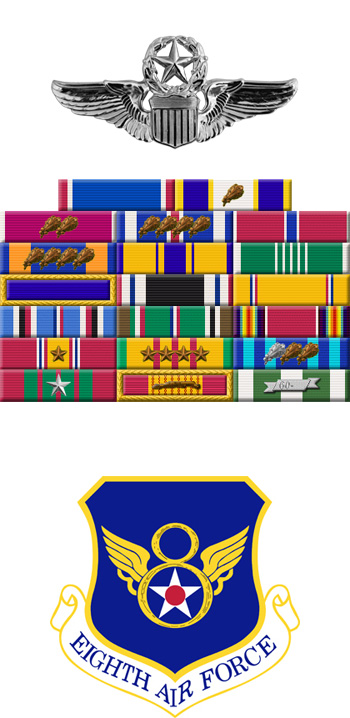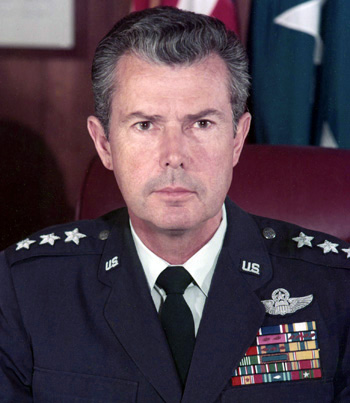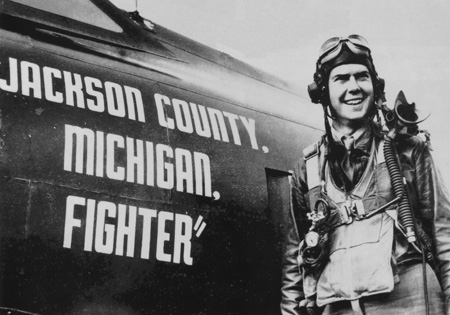
|
Gerald W. Johnson |
 |
|||
| Rank, Service | ||||
Lieutenant General O-9, U.S. Air Force |
||||
| Veteran of: | ||||
|
||||
| Tribute: | ||||
Gerald Johnson was born on July 10, 1919, in Owenton, Kentucky. He entered the Aviation Cadet Program of the U.S. Army Air Forces on September 29, 1941, and was commissioned a 2d Lt and awarded his pilot wings at Randolph Field, Texas, on April 29, 1942. During World War II, he flew with the 61st Fighter Squadron of the 56th Fighter Group and then the 360th Fighter Squadron of the 356th Fighter Group in Europe where he was credited with the destruction of 16.5 enemy aircraft in aerial combat before he was shot down and taken as a Prisoner of War in France on March 27, 1944. Maj Johnson was held by the Germans in Stalag Luft 1 in Barth-Vogelsang, Prussia, until May 1945. He served in several flying assignments after the war, and served as commander of the 508th Strategic Fighter Wing from June 1954 to May 1956. Johnson next served as commander of the 4080th Strategic Reconnaissance Wing at Turner AFB, Georgia, from May 1956 to April 1957, when he went through B-47 Stratojet combat crew training. He then served as Assistant to the Commander and then Director of Plans for the 7th Air Division at RAF Northolt, England, from July 1957 to August 1959, when he became a staff officer at Headquarters Strategic Air Command at Offutt AFB, Nebraska. Johnson then attended National War College at Fort McNair, Washington, D.C., from August 1962 to July 1963, and then completed B-52 Stratofortress combat crew training in December 1963. Gen Johnson served as commander of the 95th Bomb Wing at Biggs AFB, Texas, from December 1963 to July 1965, and then commander of the 305th Bomb Wing at Bunker Hill AFB, Indiana, until July 1966. He served as commander of the 825th Strategic Aerospace Division at Little Rock AFB, Arkansas, from July 1966 to June 1968, and then as Vice Commander of 2nd Air Force at Barksdale AFB, Louisiana, from June 1968 to April 1969. Gen Johnson was commander of the 1st Strategic Aerospace Division at Vandenberg AFB, California, from April to August 1969, and then served on the staff at Headquarters Strategic Air Command again, from August 1969 to September 1971. He next became commander of 8th Air Force at Andersen AFB, Guam, where he served from September 1971 to October 1973. During this time he flew combat missions in Southeast Asia. Gen Johnson was appointed Inspector General of the Air Force on October 1, 1973, and he served in this position until his retirement from the Air Force on September 1, 1974. Gerald Johnson died on September 9, 2002. |
||||
|
||||


